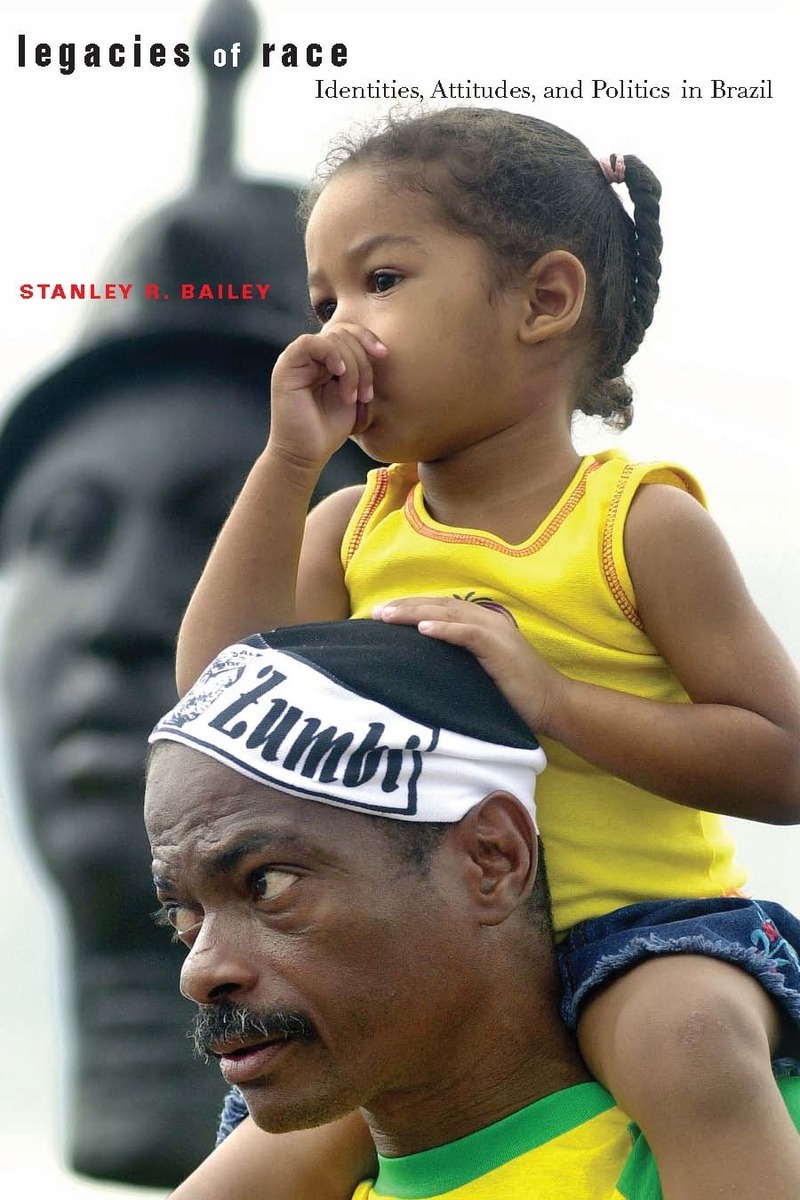Unmixing for Race Making in BrazilPosted in Articles, Brazil, Caribbean/Latin America, Census/Demographics, Media Archive, Politics/Public Policy, Social Science on 2010-08-18 17:26Z by Steven |
Unmixing for Race Making in Brazil
American Journal of Sociology
Volume 114, Number 3 (November 2008)
pages 577–614
DOI: 10.1086/592859
Stanley R. Bailey, Associate Professor of Sociology
University of California, Irvine
This article analyzes race-targeted policy in Brazil as both a political stake and a powerful instrument in an unfolding classificatory struggle over the definition of racial boundaries. The Brazilian state traditionally embraced mixed-race classification, but is adopting racial quotas employing a black/white scheme. To explore potential consequences of that turn for beneficiary identification and boundary formation, the author analyzes attitudinal survey data on race-targeted policy and racial classification in multiple formats, including classification in comparison to photographs. The results show that almost half of the mixed-race sample, when constrained to dichotomous classification, opts for whiteness, a majority rejects mixed-race individuals for quotas, and the mention of quotas for blacks in a split-ballot experiment nearly doubles the percentage choosing that racial category. Theories of how states make race emphasize the use of official categories to legislate exclusion. In contrast, analysis of the Brazilian case illuminates how states may also make race through policies of official inclusion.
At the federal university in Brazil’s capital city, Brasília, a special committee was constituted in 2004 to evaluate the application file photographs of self-classified negros (read “blacks” or “Afro-Brazilians”) applying to the university via a new racial quota system. An anthropologist, a sociologist, a student representative, and three negro movement actors make up that committee, and their identities are kept sub secreto (Maio and Santos 2005). If the committee does not consider a candidate to be a negro or negra, then he or she is disqualified. The applicant can, however, appeal the decision and appear in person before the committee to contest his or her racial classification (Universidade de Brasília 2004). The State University of Mato Grosso do Sul has also adopted the use of photographs and a verification committee for a racial quota system (UEMS 2004). At that institution, the committee is made up of two university representatives and three negro movement actors (Corrêa 2003).
This unusual modus operandi highlights a period of instability in racial categories, associated with a novel phase in the political struggle for identity and inclusion by the Brazilian negro movement. Through a multifaceted process, but without disruptive protest or mass mobilizations, the movement has successfully pressured state actors to mandate negro inclusion in higher education and to encode that legislation with language emic to the movement. The label negro is not an official census term; the Brazilian state has for well over a century used a ternary, or three-category, format to represent the black-white color continuum that includes an intermediate or mixed-race category. In contrast, negro is part of a dichotomous racial scheme, counterposed to white, whose novelty in official contexts leads to the thorny issue of defining its boundaries. Nonetheless, some 30 Brazilian public universities have already adopted race-targeted policies (Ribeiro 2007). Moreover, legislation is now before the national congress mandating that all federal universities adopt racial quotas…
…The Brazilian census has used the categories branco (white), pardo (brown or mulatto), preto (black), and amarelo (yellow or Asian descent) since 1940 and added the indígena (indigenous) category in the 1991 census. According to its 2000 census, Brazil’s racial or color composition is 54% white, 39% mulatto, 6% black, 0.5% yellow, and 0.4% indigenous. The correspondence of Brazilian census terms with a color continuum is often contrasted with the U.S. use of ancestry for classifying its population (Nogueira 1985). In the United States, ancestry has been historically understood via the rule of hypodescent (Davis 1991). According to that rule’s logic, for any person of mixed ancestry that includes some ponderable African extraction, all other ancestries are generally obviated.
In Brazil, the mulatto and black census categories are considered by negro movement actors, as well as by many scholars, to comprise persons of some discernible degree of African ancestry, whom they view as members of a negro racial group (Guimara˜es 2001; Ribeiro 2007). Prominent negro politician, movement actor, and scholar Abdias do Nascimento clarifies this specific vision of ancestry, color, and race in Brazil:
Official Brazilian census data use two color categories for African descendants: preto (literally, “black”) for the dark-skinned and pardo (roughly, mulatto and mestizo) for others. It is now accepted convention to identify the black population as the sum of the preto and pardo categories, referred to as negro, afro-brasileira, or afro-descendente. In English, “black,” “African Brazilian,” and “people of African descent” refer to this same sum of the two groups. (Nascimento and Nascimento 2001, p. 108)
In contrast to the traditional color classification scheme, this new system approximates the U.S. understanding of racial group membership (Nobles 2000, p. 172; Guimarães 2001, p. 173). That is, the negro-versus-white dichotomous classification scheme in Brazil similarly joins together individuals with some discernible degree of African ancestry into one racial group for race-targeted policy administration, in essence representing an attempt to clarify ambiguous boundaries by “unmixing” the population.
Mulattos and blacks in Brazil, however, may not view themselves as common members of a negro racial group (Agier 1993; Marx 1998). Winant writes of nonwhites’ tendency in Brazil “not only to deny, but to avoid their own [black] racial identity” (Winant 2001, p. 246; emphasis in original). Hanchard, too, calls attention in his work to Brazilian nonwhites’ “negation of their [black] identity” (Hanchard 1994, p. 22). The term negro, then, may be more a classification attributed to nonwhites by movement actors than a real social group embraced by the general nonwhite population (Nobles 2000; Telles 2004)…
To read the entire article, click here.
